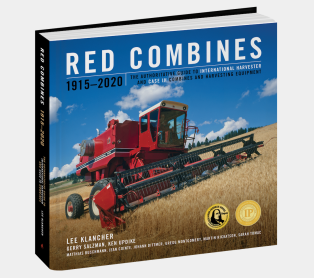Red Combines Cover Story

For the cover of my book, Red Combines 1915-2015, I was looking for a clean 1440 or 1460. When I discovered that Matt Frey had the very first IH 1460 and the machine was in clean original condition, I knew that was a contender. You couldn't find better pedigree than the first one built, and I felt an original condition machine’s hard-working patina would set the right tone for the book cover.
The goal for the cover was a night shot, somewhat evocative of the old IH advertising image used to promote the original Axial Flow combine. Darrel Darst used that early International Harvester advertising image on the cover of an issue of Harvester Highlights.
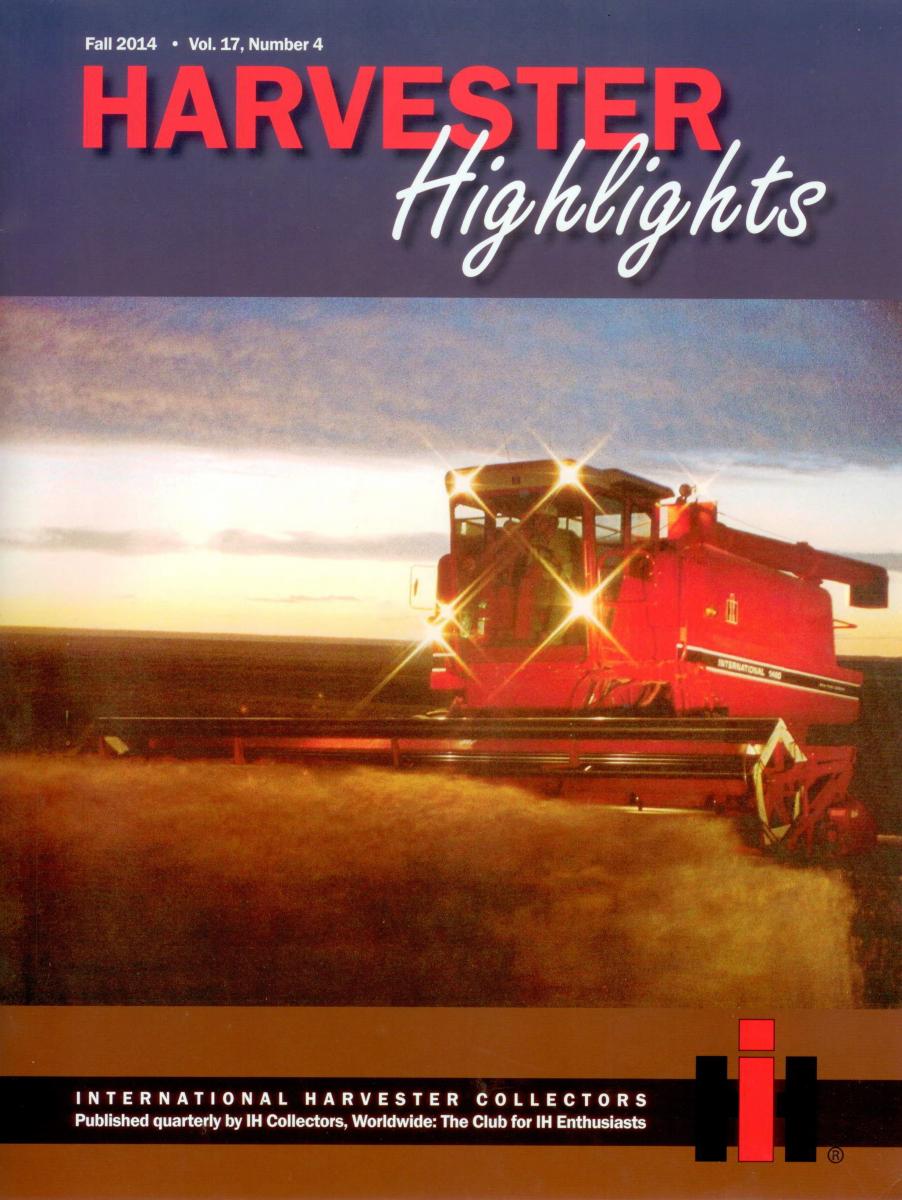
Matt was game for a night shot and excited about the possibility of a cover. We scheduled the shoot for a late September evening. Matt’s place was one of the first stops in my 4,000-mile road trip photographing combines for the book.
I arrived about 4 pm, and discovered Matt had recruited a lot of help. He was joined by a large group of friends and family at his farm, including his brother, Michael, who bought the 1440 used back in 1982 from H&N Implement. He discovered the machine was the first production unit years later, when Case IH did some research to find the first one for the 25th anniversary of the axial flow combine. I love that before and after the discovery was made that the Frey's owned a piece of history, the 1460 worked every harvest season! In addition to the historic machine, the Frey crew had utility rigs, pickup, a semi truck, a generator, tools, beans ready to harvest . . . and Jerome Ripperda, a former IH service rep who had worked on the original axial flow machines!
Jerome is a certified axial flow mechanic, and he sent his original certificate and patch from back in the day.
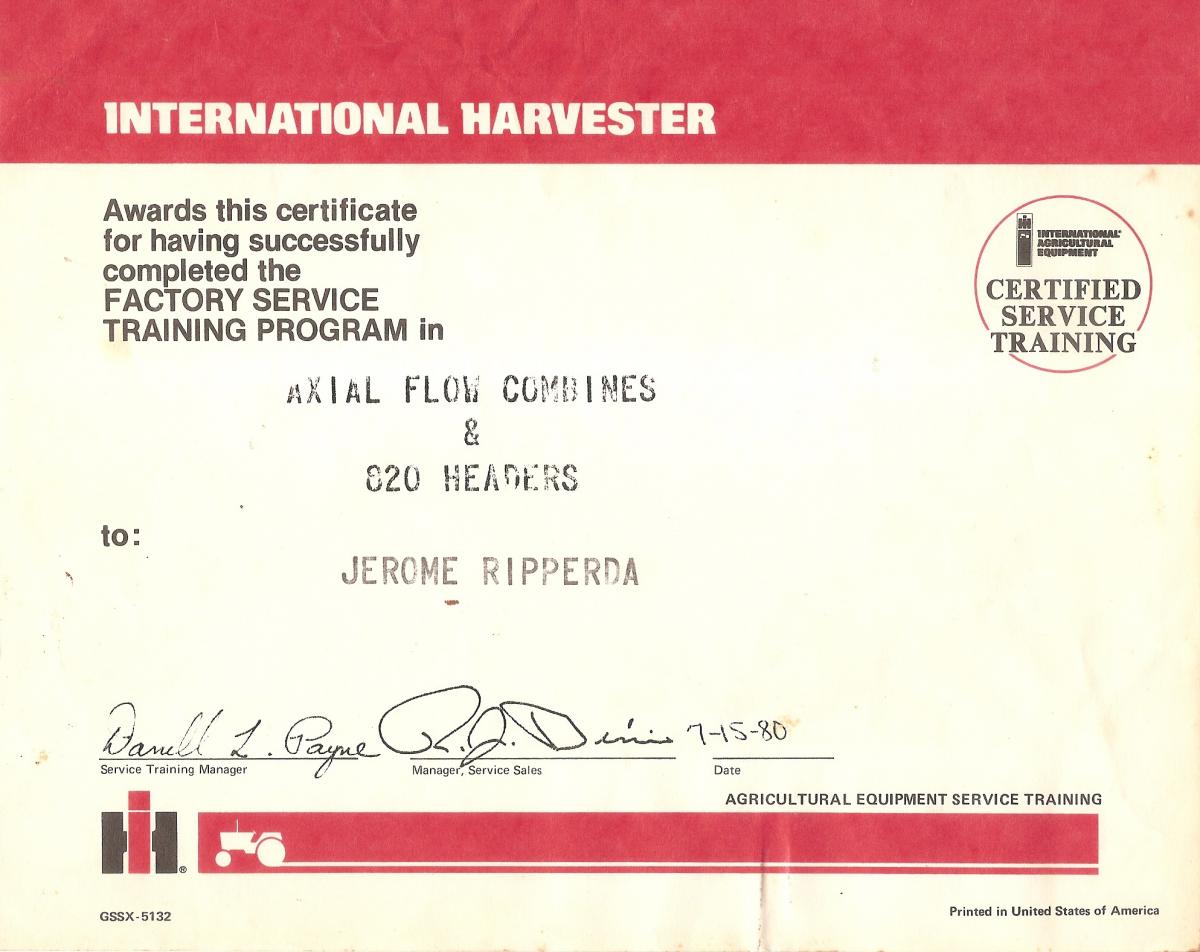
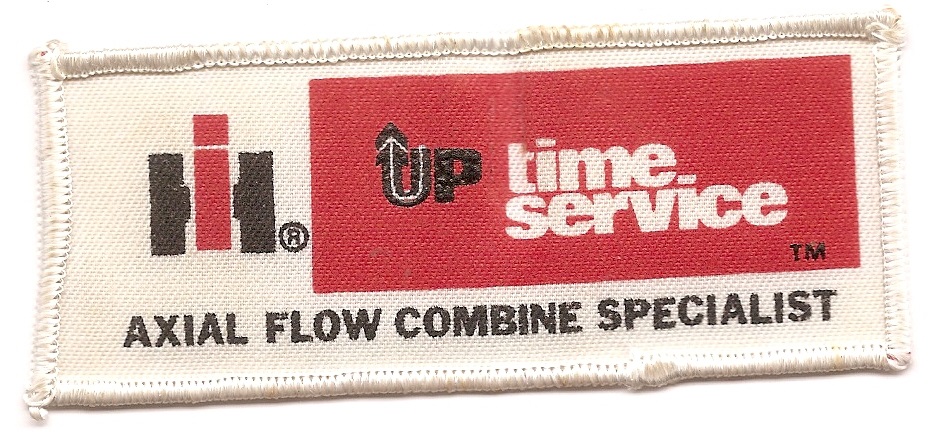
Matt had the 1460 nice and clean for the shoot, but that didn’t last for long. The operator of the 1460 was Derek Frey and he was joined by Karyssa Bohanna, his fiancé, in the cab. Karyssa's nickname is Bo, incidentally, and while she was the phone operator for the shoot, she spends plenty of time in the field running the machine.
This is their first pass down the field. The patina on the 1460 is great!

The field was extremely dry and dusty. As the combine came past, my truck and I were coated in a whirlwind of dust!
I had left the door to my vehicle open . . . whoops. The inside of the truck was a mess but, thankfully, I had closed all my camera bags, so the equipment stayed clean.
I shot some fun images of the combine receding in the dust, and then made a few exposures with the sun setting in the background. This was also a good opportunity to figure out a spot in the field that worked, and the angles on the 1460 that I liked.

Balancing the light was the trickiest part of the shoot. I wanted a warm look, with a nice rich red glow on the combine and on the beans. I had that balance right here, with this shot of Brooke Frey, who was recruited to be a light stand-in and photo assistant:
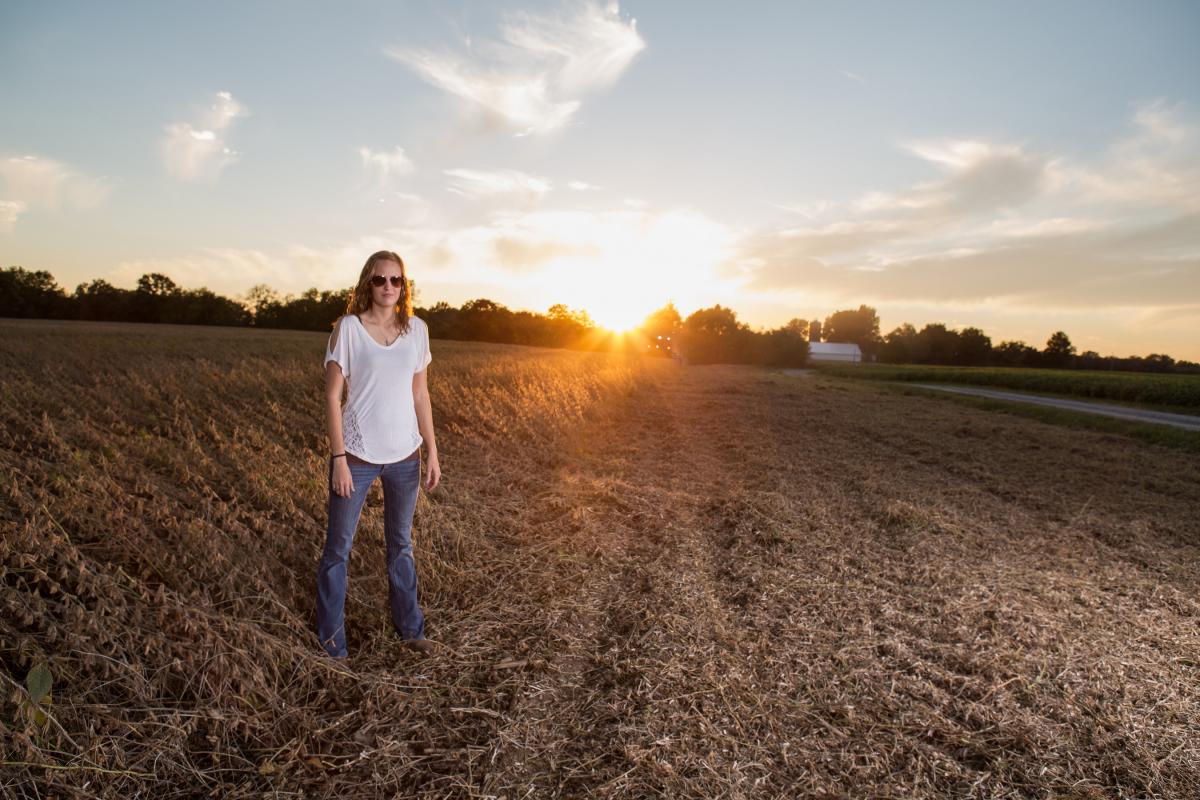
That light worked nicely on the combine here. This shot is nice, but not a cover—we are missing the light streaks and there is no action. We’ll fix that later . . .
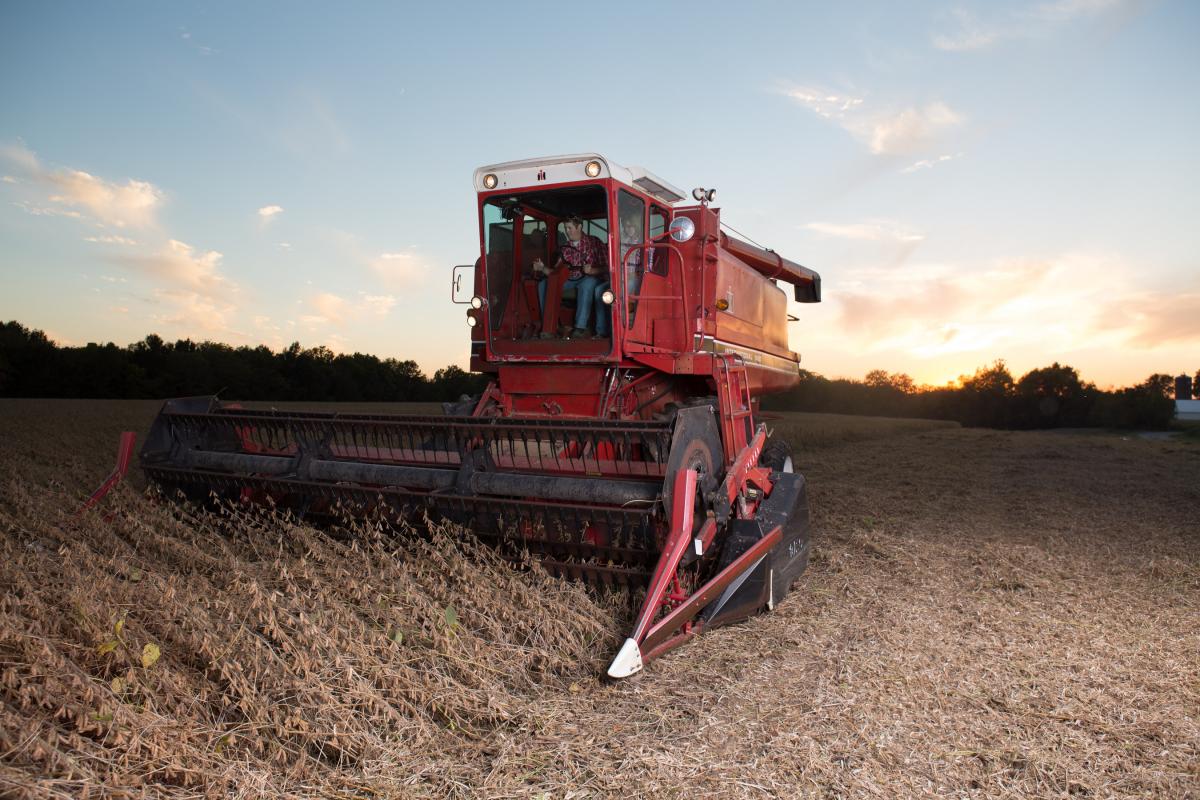
Note that Bo is on her cell phone. That was key to this shoot. One of the simple ideas the Frey group had worked beautifully. Michael Frey stood next to me and was on the phone continuously with Bo. I could give instructions, and she passed them on to Derek. That proved tremendously useful for coordinating the shots, as we needed the combine to stop at very specific points, and to start and stop the beaters.
They stopped in the middle of the field for this shot, which is an image comprised of multiple exposures (and requires the machine to stop):
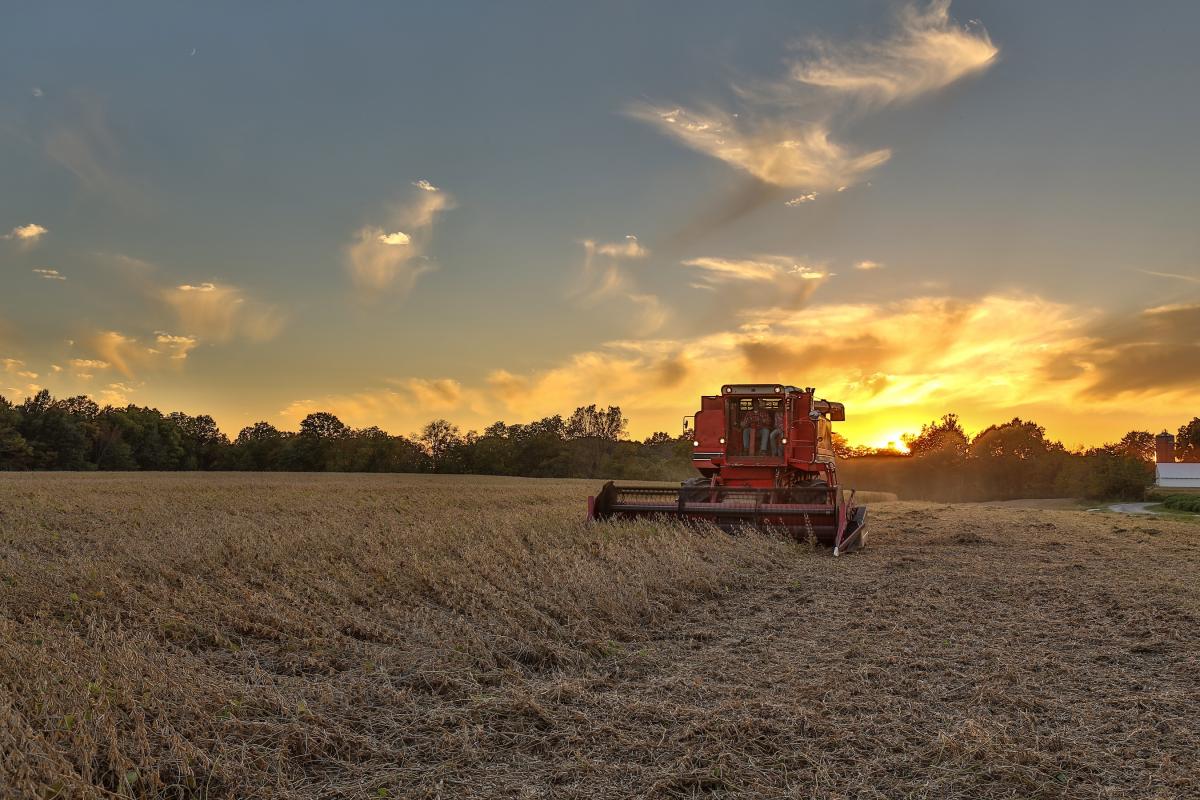
As it neared full dark, the real work began. I wanted it nearly full dark, as that gives you those nice midnight-blue skies that really allow the red combine and bright lights on top of it to pop. This is also ideal to help make white cover copy strong and clear.
I wanted Derek to pull up to the spot I had in mind, and stop the machine but leave the thresher and beaters running. If I hit it right, there would still be some dust in the air and the movement of the threshers and beaters would let you know the combine was running.
As luck would have it, the cell phone technique worked like a charm and Derek stopped on a dime--right where I had the lights and camera positioned. As a bonus, the moon was settled right on top of the cab, offering a nice little accent.
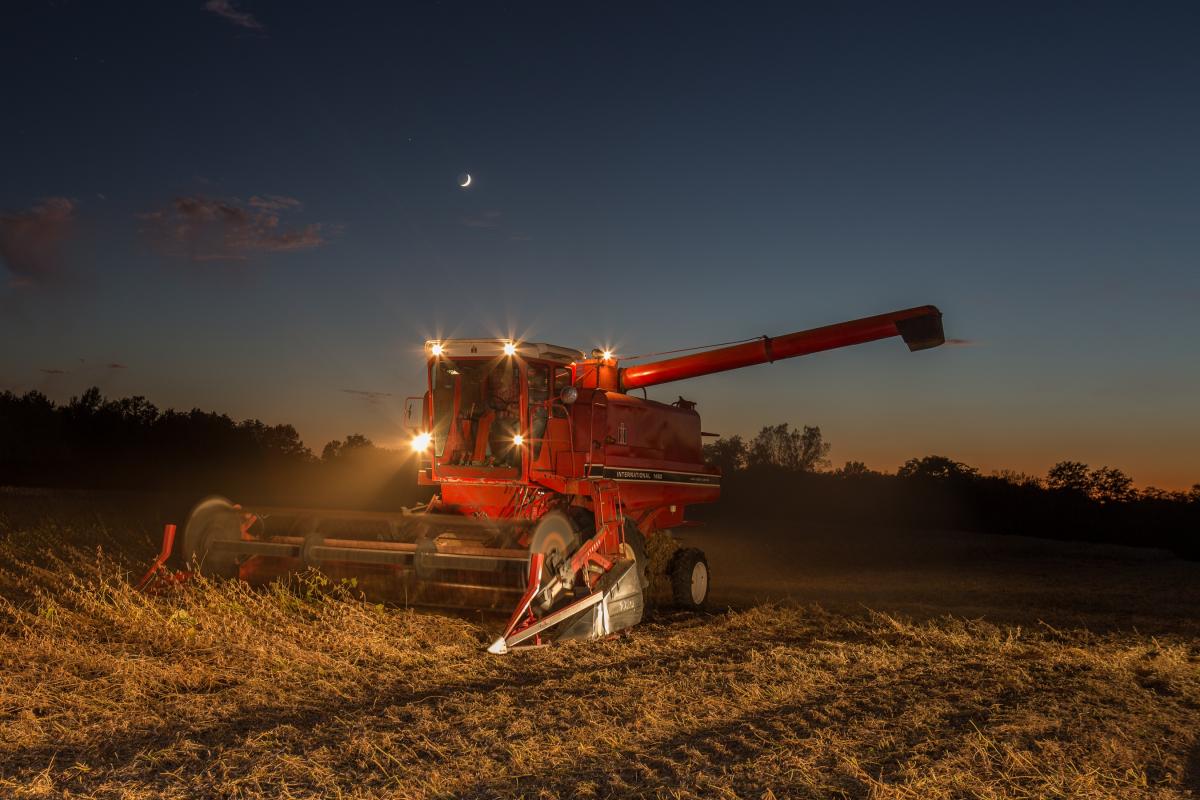
Jerome Ripperda, the former IH service rep at the shoot, showed up in a crisp IH uniform from back in the day. Jerome remembered performing a field service in which he drilled a hole in the side of a brand-new 1460 axial flow to remove a shaft. The fix he performed eventually became an official IH update to the machine.
Jerome jumped in a few shots, including this one (his vintage IH shoulder patch makes this shot IMHO):
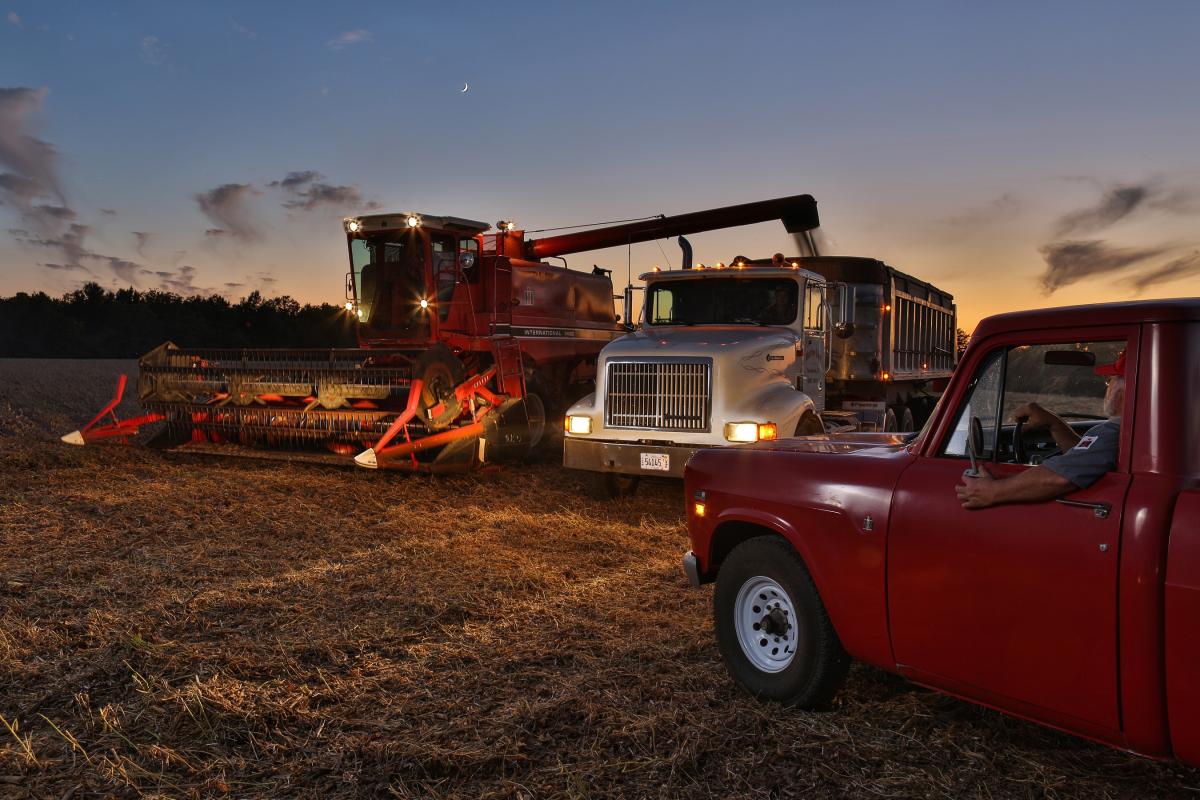
And this one:

I closed out the night with this grab shot of the scene at the shoot:

As the night wound down, I was reminded that working with farmers is awesome. The Frey group was exceptional at jumping in to lend a hand, figuring out creative solutions, and working together as a team. I suspect that years of harvesting honed those skills. In additon to all of those mentioned abvove, Jan Ripperda and Sherri Frey were helpful. Danielle Markus brought out her newborn to be part of the action. The Frey family was also fun to work with, and made it easy to put together a fun, evocative final product!
So, here it is, the cover for Red Combines 1915-2015. I love how the machine shows off some of it's hard-working original condition pedigree, but has a nice warm red glow.
GEEKY EQUIPMENT STUFF
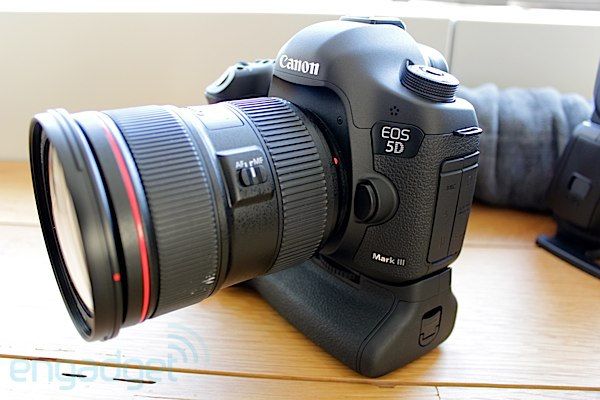
The images were made with a Canon 5D Mark III, which has a capable 22.3-megapixel 36x24mm (full-frame for 35mm) sensor that provides very good low-light sensitivity and image quality. The 61-point autofocus does an outstanding job of hitting focus even in extremely low light (tho a few images were done with manual focus).
The 5D Mark III exposure sensing system is also quite good, but not up to balancing light in situations like the 1460 cover which use multiple light sources and long exposures. The cover image was shot at an aperture of F11 and exposed for 13 seconds.
The lens was a Canon 24-70 F2.8L zoom, set at 30mm. This is my go-to lens and focal range. The camera and lens are supported by an Induro tripod topped with a Markins 3Qi ballhead.

I lit the scene with a Speedotron Explorer 1500, Speedotron 202VF heads, and two 7-foot Westcott umbrellas on Manfrotto stands.
The battery-powered powerpack eliminates the need for generators or extension cords and is ideal in the field. The big umbrellas provides lots of even, powerful light—plenty for modern image sensors.
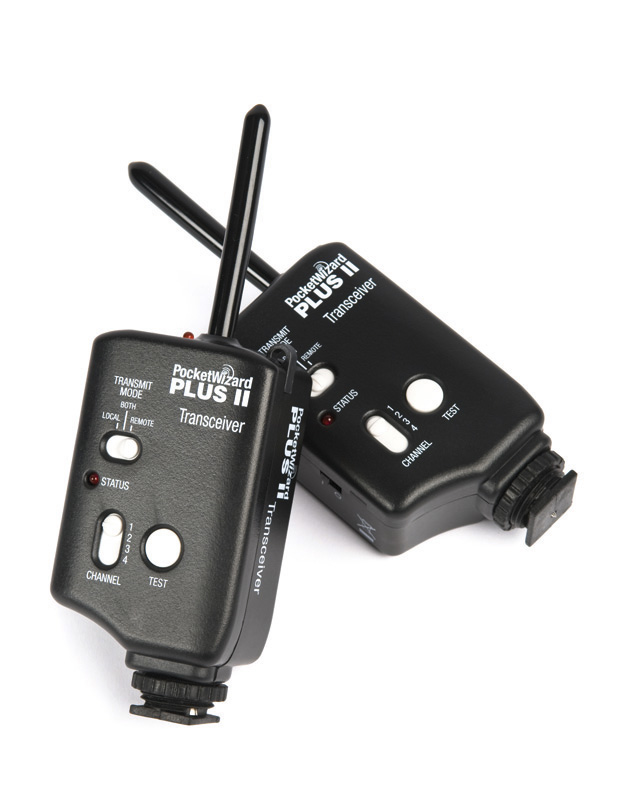
The power pack was triggered wirelessly with Pocketwizard Plus IIs on the pack and the camera.
Images were captured as RAW files, and editing and selection was done in Lightroom 5.0 and Photoshop CC on an Apple iMac 27-inch with 2.9ghz I5 chip and 24MB of RAM.


